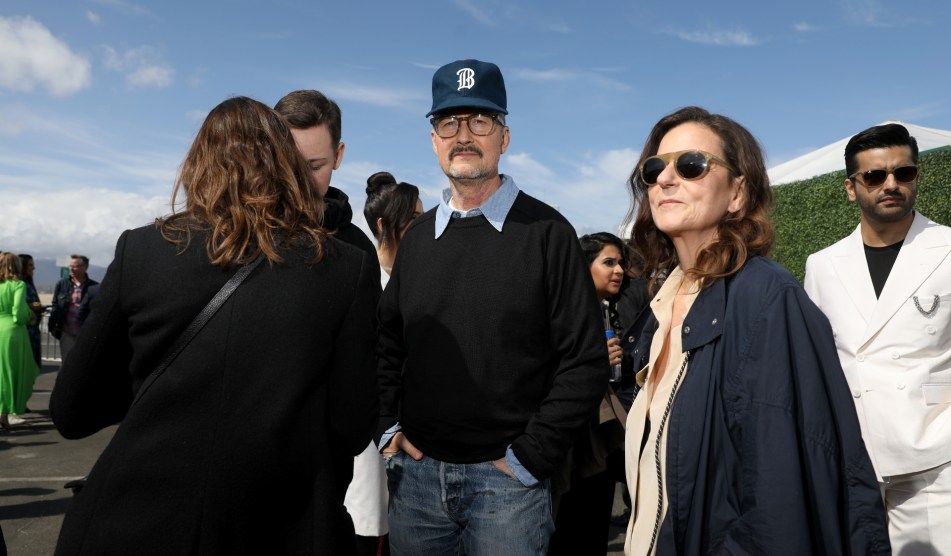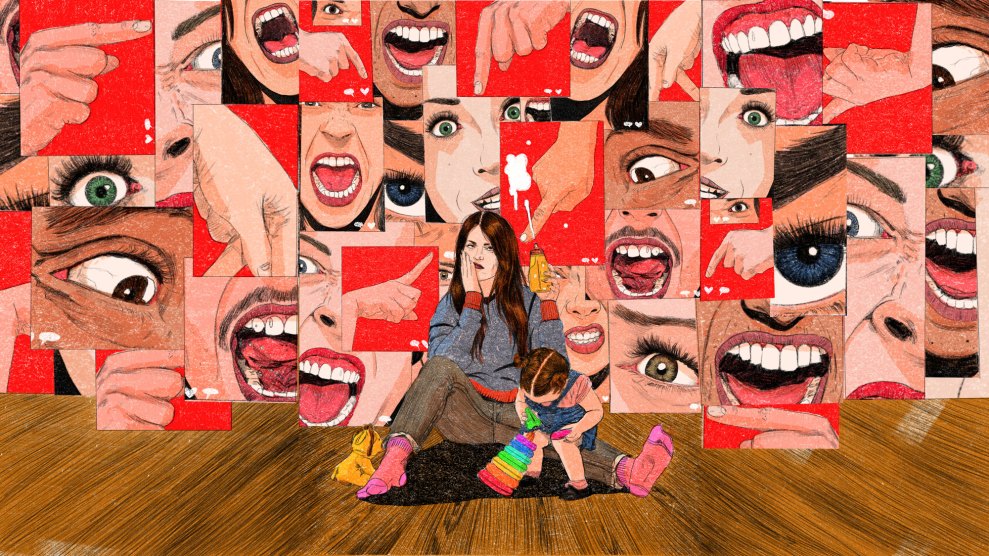
Todd Field, director of Tár, at the 2023 Film Independent Spirit Awards.Gary Coronado/Getty
Tonight, the Oscars and finally, I hope, the end of Tár—a movie I hated. It is nominated for six awards, including Best Picture. Before this is over, I want to say one last time: This movie is middlebrow crap.
In this turgid, conservative (politically, yes, but aesthetically, truly conservative) film, our main character, Lydia Tár, is a conductor. Supposedly, she is a great one. The film takes us through her “cancellation.” There are other plot points, there are other moments. But this is what this film is about. It is a cancel culture movie focused on the abuser. And so when I saw it last year, I walked away with many of the same thoughts as Richard Brody, who called it “regressive.”
I found Tár adequate, conservative, and adult. It is a film version of a finely-wrought Atlantic piece on cancel culture. In each, there are concrete successes—crisp sentences and scenes—but nothing is beautiful, and nothing is challenging. As Brody wrote: “‘Tár’ is a useful reminder of the connection between regressive ideas and regressive aesthetics.” What even is there to analyze here? The shots are languid. Professional lighting. Meaningless and composed frames of Cate Blanchett. Tár is well done and ill-conceived.
This is not an illuminating movie; it is just quiet. In its silences, the greatest minds of my generation (well, honestly, not mine; the one above mine) have found much more interesting ways of viewing Tár than director Todd Field could ever imagine himself. What if the end was a dream? What if the hyper-focus on an abuser doesn’t elicit empathy (despite that being exactly what it seems to do)? What if one of the most condescending, ridiculous scenes I’ve ever seen in a film was, in fact, not a poorly written Gen-X jeremiad but something which offers Easter eggs to question art’s nature to reality itself?
The movie is awarded a knowingness it never earns. The film treats you like an idiot.
Consider the opening sequence. Before anything, we see the credits—a list of assistant directors and assistants to directors. This is such an obvious choice that I feel weird even typing this next bit: The idea is to say that, unlike Lydia Tár, this film is interested in the people behind the scenes. No abuses of power here. Fair enough, but now there is a proposition to defend, and the film has invited us to judge it on how well it defends that idea. And yet here is how Field himself explains, in a New Yorker piece by Michael Schulman, his own power as director in relation to the opening:
“Tár” begins where most movies end: with a full list of credits. When I asked Field about this choice, he said that it had to do with the “pyramid of power,” on which someone like Tár stands at the apex. “What are the cornerstones of a pyramid, and how does that support the top?” he explained. “The lines of power really interest me: Who enables it, and what benefit do they get from it? And when is it no longer a benefit?” By listing the gaffers and sound technicians at the beginning of the movie instead of the end, he inverts the pyramid, implicitly drawing a parallel between Tár and himself. Did that mean he saw in his own power a Tár-like capacity for corruption? “I don’t feel like I have any power at all,” he said. “I work seven days a week. I’m lucky to get five hours of sleep a night. I just feel like a panicked parent.”
You’re just a Dad? You, the director, don’t have “any power at all”? Come on. Godard is barely dead and you’re making him roll over in his grave. Field is already shrinking from the argument implied by his use of the credits. You want parables about cancel culture? Here’s one: the guy with the most power in the room pretending he has none.
The movie soon shows the egalitarianism of its upside-down credits to be a pose. No scene has been more overlooked and overanalyzed in this way than when Lydia Tár teaches at Julliard and rants at a student. In this scene—the centerpiece of the film—Tár battles against a “BIPOC” and “pangender” student who does not want to play the cancellable Bach. Tár rants about the difference between art and the artist. She is complex, contradictory, and fascinating. She is fully realized.
But the student is not a human so much as something out of Bari Weiss’ collection of finger puppets. The character changes on a dime to suit the needs of a scene in which Tár is transmogrified into the victim. The student first shivers and backs away: a beta snowflake. A moment later, the student ends the encounter by yelling that Tár is a “bitch.” We are to believe this sensitive social justice warrior would respond in this way? We are to believe someone so committed to idpol’s attack on the Western canon that they refuse to play Bach would be terrified when the time came to argue their points? Say what you will about this particular form of identity politics, but anyone who has spent time in college classrooms over the past decade knows that its adherents absolutely live for moments like this. They have practiced their rant in the mirror a hundred times.
This scene has for some reason been treated as purposely stupid—a subtle play on the viewer’s expectations. But it isn’t. It’s just bad writing. It is the fantasia of someone frustrated by cancel culture. For all intents and purposes, it also flips the real situation. Tár, the abuser, is made more complex than most shitty people are in real life; the student—and their beliefs in politics, art, and (oh gasp!) culture studies—is flattened like a penny on a railroad track.
The movie stumbles into saying something perceptive here, only it doesn’t even realize it. Field is so determined to show the student to be shallow and insincere in their politics that the film accidentally reveals something true about these cancel culture moments in the academy: that they are very often instances of class warfare, fought on the only favorable terrain permitted to powerless young people in intensely hierarchical settings like the classroom. Professors have tenure, unions, connections. Students have nothing but public outrage.
Most of the time we don’t notice inadequacies like that in this movie because the film is not bothering to speak any idea into existence at all. Tár is mostly submerged and fearful. If you’re half-asleep, I guess that can be seen as nuance. But in full light, any ideas from Tár are simple and well-trodden.
Is it really that gob-smacking to think that moral orthodoxy puts some artists in a corner when it comes to commercial success? Is it really a challenge for a film to have us sympathize with an abusive genius? In Tár there is not a single question that any 52-year-old nodding along to a New York Times op-ed hasn’t wondered. And its answers are even worse: an ending that implies the true artists are cast aside to make childish things for dorks; that bad people are complicated; that young people have lost sight of art in the name of identity. There is no originality in this. And there’s absolutely no originality in how the ideas are presented, with this trademarked ‘good Oscars film’ look.
So, here is my theory on Tár: It sucks but it allowed a discussion. People are so hungry for any movie that doesn’t involve a “cinematic universe” and anything that confirms for them it’s okay to have deep questions about “cancel culture” that the movie has hit a niche. Commenters have found what they need. Tár allowed us to write and think and pollute bars with our takes on cancel culture without having to go report on some incident at Oberlin. “Finally,” Michelle Goldberg notes, “a great movie about cancel culture.” Maybe it’s just finally a movie.
No one took this opportunity more than Zadie Smith. In the New York Review of Books, Smith wrote a long piece on the film. She gracefully moves through the movie and her own thoughts. She writes, as usual, with perfect pitch. Yet, one can’t help but see through it this time. For example, this paragraph is well-written and silly:
We of Tár’s generation can be quick to lambaste those we call (behind their backs) “the youngs,” but speaking for myself, I’m the one severely triggered by statements like “Chaucer is misogynistic” or “Virginia Woolf was a racist.” Not because I can’t see that both statements are partially true, but because I am of that generation whose only real shibboleth was: “Is it interesting?” Into which broad category both evils and flaws could easily be fit, not because you agreed with them personally but because they had the potential to be analyzed, just like anything else. Whereas if you grew up online, the negative attributes of individual humans are immediately disqualifying. The very phrase ad hominem has been rendered obsolete, almost incomprehensible. An argument that is directed against a person, rather than the position they are maintaining? Online a person is the position they’re maintaining and vice versa. Opinions are identities and identities are opinions. Unfollow!
Setting aside that these sentences bash social media while seemingly being designed to be highlighted on social media (“Unfollow!”), the problem is Smith is so busy dutifully telling us she understands where the young folks come from she presumes and assumes. She’s battling a projection.
Let’s look at the heart: “Whereas if you grew up online, the negative attributes of individual humans are immediately disqualifying.” Really? We can avoid shtick about cancel culture not being real, but maybe Smith needs to spend more time online, where reactionary opinion is popular, especially among young people. I don’t think age is a factor, or the internet, as much as a stereotype: Smith has seen a stance among some young people and has found a way to attack something that has long bugged her but refuses to name names of who she dislikes. (It made me think of another writer of her generation. David Foster Wallace had an essay in Harper’s reviewing dictionaries that plods along for thousands of words, explaining the importance of the English language—and the impotence of identity politics attacking it—before revealing near the end that this was a long-winded response to an “Official Complaint a black undergraduate filed against” him.)
Once the sentences become clipped, Smith’s meaning becomes clear. No more hedging now. She opines: “Opinions are identities and identities are opinions.” Wait: I thought you just said that for you the hard part of statements pointing out that a great author is misogynistic is that it flattens critiques; that such discussions are “triggering” to your one “shibboleth.” And yet by the end of the paragraph, it is the “youngs” who can’t deal with the fullness of an artwork? It is those who grew up online who cannot live in contradiction? They are left with only “opinions” as an identity? Or maybe the mirror calls. Why can’t you deal with the idea of your great art being by bad people? Maybe the issue is that for a generation—or a specific slice of it—having an opinion about art was an identity, and bringing in new methods to viewing art has caused them all to reel out, like Tár at Julliard.
For Smith and Tár much of the analysis is smart, a lot of it is spiteful, and all of it doesn’t seem to recognize the person in front of them is just as real as they are. Here are people as complex as you. So, who really needs to grow up and practice empathy?
In the end, what I wanted from Tár was to just say with its chest what it whispers. Show art is powerful. Do a single thing formally or in the script that shocks. Make us squirm not with this annoying logic about cancel culture, but terror: Make us fall in love with Tár’s art as we see the evil she does.
Instead, almost all of that is offscreen here: the music and Tár’s sins. Each are only glimpsed. Cut scenes of the symphony. Tiny windows into the harm to young women. That is because from beginning to end, Tár’s interest in art is always secondary to its politics. It has the problem of many pieces about cancel culture: It huffs about the need for challenging art while not deigning to be the kind of work it champions. It is too busy trying to prove a point to make one.












